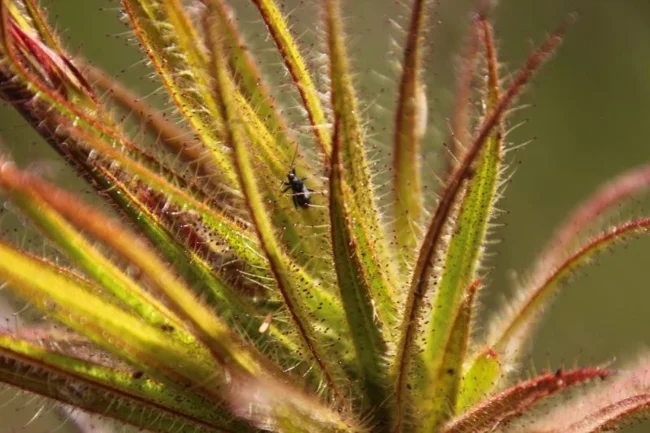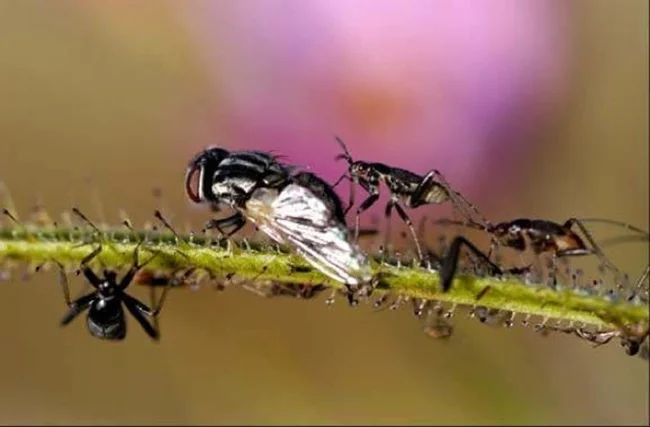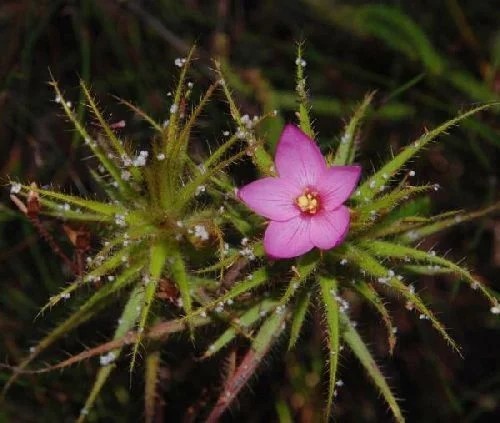Roridula: A predator that catches flies and does not eat them (4 photos)
As you know, among the representatives of the flora, many can afford a fly or various kinds of spider bugs for lunch. However, such specimens as the toothed roridula (R. dentata) and the Gorgon roridula (R. gorgonias), either out of nobility or out of personal gain, will never eat their prey themselves - they will give it to a comrade. 
Living in only a few regions of South Africa, the roridula is capable of catching quite large insects. Only her regular clients will eat them - horse flies and spiders, living in the thickets in the hundreds, which is quite logical: they are predators who do not need to bother looking for food, our heroine will do it for them.
A characteristic feature of this shrub is its leaves: long, thin, awl-shaped, covered with an adhesive substance that looks like droplets of resin. As soon as the victim gets caught in the sticky net, it is automatically doomed to be eaten. The inhabitants of the roridula immediately begin to assess the situation and wait until their target is weakened enough, trying to escape from the sticky secretion of the plant, which is futile. After which the bugs, using a sharp proboscis, pierce their prey and begin to eat along with the spiders. 
Dinner is served!
These bugs spend their entire lives on our heroine and, surprisingly, do not stick to her. Horseflies move freely along the sticky leaves of the roridula, but how they manage to do this is not yet entirely clear. There is a version that their paws are covered with thin bristles that prevent the sticky secretion of the roridula from penetrating deep into the depths. There is also an assumption that the speed of movement along the leaves and the length of the legs help them: in this case, the body has less chance of touching the surface of the plant. 
It may seem that such behavior is not entirely fair to the roridula nurse, but bedbugs do not remain in debt, unlike spiders, which are indeed dependents. After eating, the horseflies pollinate our plant, leaving their droppings on it, which, in turn, is food for the roridula. So it turns out that bedbugs and roridulas simply feed each other throughout their entire lives. 
The union of roridula and horsefly bugs can be called a real cooperation: without these small swallows, roridula would not be a predator and would not receive proper nutrition, and horseflies are found only in its sticky thickets, thanks to which they survive. It should also be noted that local residents do not ignore the roridula and use its branches as Velcro to catch flies indoors.





